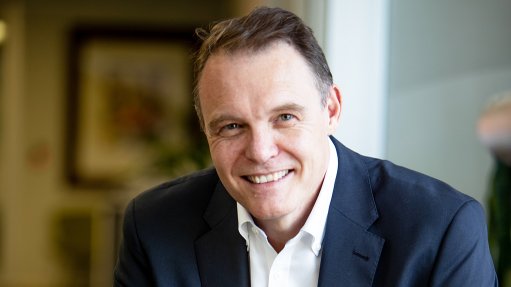Climate denialists’ silly obduracy
The myriad of extreme weather events experienced in 2019 should be enough to convince even the most obdurate naysayer to accept the conventional wisdom that global warming – caused by the spewing of greenhouse gases into the atmosphere – is behind climate change.
I have heard someone argue that, in 1891, when South Africa hardly had any emissions-belching factories, Durban was pummelled by heavy rain, accompanied by strong winds. A total of 190 mm was recorded. Sixteen years later – in 1917 – extreme rain and gale-force winds again struck Durban and surrounding areas. The Umgeni railway bridge was washed away, houses were damaged, and lives were lost. Two similarly devastating events apparently took place in the following two decades.
These events may have come to pass, but they were flukes. Tropical cyclones like the ones that hit Malawi, Mozambique and Zimbabwe last year and the oft-occurring floods in many parts of Africa have become the new normal, and the scale of their destruction is so huge that the damage attributable to the 1891 and 1917 events pales into insignificance.
And how do those who gainsay the ‘global warming causes climate change’ narrative explain the fact that, at the beginning of last month, the Victoria Falls, on the Zambezi river, had been reduced to slightly more than a trickle by a lengthy and severe drought?
Before Scottish explorer David Livingstone named the falls after his queen in 1855, they were known to the local populace as Mosi- oa-tunya, which means ‘the smoke that thunders’. This was a reference to the plumes of mist that hover around the falls as the waters of the Zambezi roar as they plunge 100 m into a churning chasm that has been carved out by the river over thousands of years. That roar had become somewhat muted by early December.
While the falls typically slow down during the dry season, last year’s water-level decline, caused by reportedly the worst drought in a century, was unprecedented.
The falls, with their stunning views, have hitherto drawn millions of tourists each year, generating foreign currency for Zambia and Zimbabwe, which have the Zambezi as a common border. All that revenue is threatened courtesy of man-induced climate change.
That many African countries are moving at pedestrian pace to mitigate climate change boggles the mind. Kenya is one of very few exceptions. In 2018, the country, which is East Africa’s economic powerhouse, broke into the top five of research firm Bloomberg New Energy Finance’s Climatescope annual survey, which ranks emerging-market countries on their clean energy development and outlook.
The 2018 survey, the results of which were released in late November, included 104 countries.
The only countries that outperformed Kenya were top-ranked India, followed by Chile, Brazil and China.
The Climatescope report writers said of Kenya: “A boom in clean energy investments in 2018, along with Kenya’s extensive renewable-energy value chain, pushed the country into fifth position.
“Kenya is gradually boosting the contribution nonlarge-hydro renewables make to its grid by adding more solar, wind and geothermal capacity. In 2018, nonhydro renewables accounted for 38% of the country’s capacity and 49% of generation. This is set to continue growing, as clean energy investment reached a new record in 2018, with $1.4-billion attracted for geothermal, wind and solar plants.”
The $1.4-billion injection was the country’s highest-ever clean energy investment. Seventy-seven per cent of this figure was foreign direct investment, with the balance emanating from domestic investors.
The picture presented by the Climatescope report is not all rosy, though. From 2014 to 2018, emerging-market countries added 319 GW of new coal capacity to their grids – equivalent to the combined installed capacity of the UK, Spain and Italy.
Article Enquiry
Email Article
Save Article
Feedback
To advertise email advertising@creamermedia.co.za or click here
Comments
Announcements
What's On
Subscribe to improve your user experience...
Option 1 (equivalent of R125 a month):
Receive a weekly copy of Creamer Media's Engineering News & Mining Weekly magazine
(print copy for those in South Africa and e-magazine for those outside of South Africa)
Receive daily email newsletters
Access to full search results
Access archive of magazine back copies
Access to Projects in Progress
Access to ONE Research Report of your choice in PDF format
Option 2 (equivalent of R375 a month):
All benefits from Option 1
PLUS
Access to Creamer Media's Research Channel Africa for ALL Research Reports, in PDF format, on various industrial and mining sectors
including Electricity; Water; Energy Transition; Hydrogen; Roads, Rail and Ports; Coal; Gold; Platinum; Battery Metals; etc.
Already a subscriber?
Forgotten your password?
Receive weekly copy of Creamer Media's Engineering News & Mining Weekly magazine (print copy for those in South Africa and e-magazine for those outside of South Africa)
➕
Recieve daily email newsletters
➕
Access to full search results
➕
Access archive of magazine back copies
➕
Access to Projects in Progress
➕
Access to ONE Research Report of your choice in PDF format
RESEARCH CHANNEL AFRICA
R4500 (equivalent of R375 a month)
SUBSCRIBEAll benefits from Option 1
➕
Access to Creamer Media's Research Channel Africa for ALL Research Reports on various industrial and mining sectors, in PDF format, including on:
Electricity
➕
Water
➕
Energy Transition
➕
Hydrogen
➕
Roads, Rail and Ports
➕
Coal
➕
Gold
➕
Platinum
➕
Battery Metals
➕
etc.
Receive all benefits from Option 1 or Option 2 delivered to numerous people at your company
➕
Multiple User names and Passwords for simultaneous log-ins
➕
Intranet integration access to all in your organisation
















